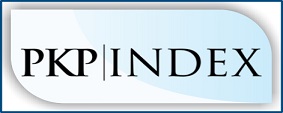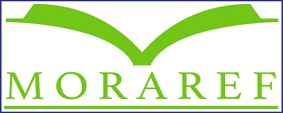ANALISIS IKLIM KESELAMATAN KERJA DI PT. XYZ BALIKPAPAN 2021
DOI:
https://doi.org/10.31004/prepotif.v5i2.1938Keywords:
Safety climate, NOSACQ-50, K3Abstract
This study was conducted to determine the safety climate, the safety climate reflects workers' perceptions of the true value of safety in an organization - as a contributing factor to the reduction of accidents due to accidents. The purpose of this study was to determine the level of health and safety scores in the company. This study uses a descriptive analytical method with a total of 100 respondents (total respondents) with a variable measuring the level of work safety using a questionnaire published by the National Research Center for the Danish work environment, namely the Nordic Climate Safety Questionnaire 50 (NOSACQ-50) which contains 50 statements and has been completed. tested and translated in 40 languages, one of which is Indonesian. This research was conducted at PT. XYZ Balikpapan which starts in January until March 2021,. The results of this study indicate that there are 3 dimensions that have an average value below 3.30, namely the management safety empowerment dimension, management safety justice dimension and worker’s safety priority and risk non-acceptance dimension. Suggested improvements include making decisions and receiving advice and input from workers regarding work safety and being fair to workers regarding occupational safety and health for management and prioritizing work safety and not taking risks even though the work is busy and reducing risk-taking behavior that is dangerous for workers.References
Kemnaker RI. 2020. “No Title.†2020. https://kemnaker.go.id/news/detail/menaker-jadikan-k3-sebagai-prioritas-dalam-bekerja
Pertamina Geothermal Energy. 2021. “Safety Stand Down Meeting Fatality Incident at Sorik Merapi Geothermal.†Tapanuli Selatan
Journal
Griffin, Mark A., and Matteo Curcuruto. 2016. “Safety Climate in Organizations.†Annual Review of Organizational Psychology and Organizational Behavior 3 (April): 191–212. https://doi.org/10.1146/annurev-orgpsych-041015-062414.
Guldenmund, Frank W. 2010. “Understanding and Exploring Safety Culture.†Research Agenda of Risk and Design Anno 2005. 20 Years Chair in Safety Science at the TU Delft 1985-2005, no. 10: 1466–80.
Kines, Pete, Jorma Lappalainen, Kim Lyngby Mikkelsen, Espen Olsen, Anders Pousette, Jorunn Tharaldsen, Kristinn Tómasson, and Marianne Törner. 2011. “Nordic Safety Climate Questionnaire (NOSACQ-50): A New Tool for Diagnosing Occupational Safety Climate.â€
Catley, Bevan, Tim Bentley, Darryl Forsyth, Helena Cooper-Thomas, Dianne Gardner, Michael O’Driscoll, and Linda Trenberth. 2013. “Managing Workplace Bullying in New Zealand: Perspectives from Occupational Health and Safety Practitioners.†Journal of Management and Organization 19 (5): 598–612. https://doi.org/10.1017/jmo.2014.2.
Cooper. 2000. Towards a Model of Safety Culture. Safety Sciene.
International Journal of Industrial Ergonomics 41 (6): 634–46. https://doi.org/10.1016/j.ergon.2011.08.004.
Kurniasih, Dewi, and Renanda Nia Rachmadita. 2013. “Pengukuran Budaya K3 Pada Tingkat Non Manajerial Dengan Menggunakan Cooper’S Reciprocal Safety Culture Model Di Pt. X.†J@Ti Undip : Jurnal Teknik Industri 8 (2): 83–88. https://doi.org/10.12777/jati.8.2.83-88.
Pangkey, Febyana, Dosen Jurusan, Teknik Sipil, Fakultas Teknik, and Universitas Sam. 2012. “PENERAPAN SISTEM MANAJEMEN KESELAMATAN DAN KESEHATAN KERJA ( SMK3 ) PADA PROYEK KONSTRUKSI DI INDONESIA ( Studi Kasus : Pembangunan Jembatan Dr . Ir . Soekarno-Manado )†2 (2)
Raharjo, A. 2014. “Profil Iklim Keselamatan (Safety Climate) Pada Tingkat Pelaksana Di PT Petrokimia Gresik Tahun 2014.†UIN Syarif Hidayatullah Jakarta.
Sudarmanto. 2018. “Analisis Iklim Keselamatan Kerja (Safety Climate) Tenaga Harian Lepas Armada Sampah Pada Dinas Lingkungan Hidup Kota Tangerang Dengan Metode NOSACQ-50.â€
Zohar, Dov. 2010. “Thirty Years of Safety Climate Research: Reflections and Future Directions.â€
Book
Arikunto. 2010. Prosedur Penelitian. Jakarta: Rineka Cipta.
Gunawan. 2013. Safety Leadership. 2nd ed. Jakarta: Dian Rakyat.
Sugiyono. 2013. Metode Penelitian Kuantitatif Kualitataif Dan R&D. Alfabeta.
Law Regulation & Standard
BSI. 2018. “OHS Management System ISO 45001 : 2018.†British Standard Institution.
UU No 1 Tahun. 1970. Keselamatan Kerja
Peraturan Pemerintah Nomor 50 Tahun 2012 Tentang Sistem Manajemen Keselamatan dan Kesehatan Kerja
Website
ergoplus. 2019. “25 Signs You Have An Awesome Safety Culture.†2019. https://ergo-plus.com/25-signs-you-have-an-awesome-safety-culture/.
safetysign.co.id. 2017. “7 Kunci Sukses Membangun Budaya Keselamatan Di Perusahaan.†2017. https://www.safetysign.co.id/news/323/7-Kunci-Sukses-Membangun-Budaya-Keselamatan-di-Perusahaan#:~:text=Budaya keselamatan merupakan kombinasi antara,persepsi pekerja terhadap lingkungan sosialnya.
www.nfa.dk. n.d. “Safety Climate Questionnaire - NOSACQ-50.†https://nfa.dk/da/Vaerktoejer/Sporgeskemaer/Safety-Climate-Questionnaire-NOSACQ50.
www.ruangenergi.com. 2021. “Kecelakaan Tambang Di Kalsel, Ditjen Minerba : Bukan Karena Banjir.†2021. https://www.ruangenergi.com/kecelakaan-tambang-di-kalsel-ditjen-minerba-bukan-karena-banjir/.
Downloads
Published
How to Cite
Issue
Section
License
Copyright (c) 2021 Deni Eri Zulfirman, ZULKIFLI DJUNAIDI

This work is licensed under a Creative Commons Attribution-ShareAlike 4.0 International License.
Authors who publish with this journal agree to the following terms:
- Authors retain copyright and grant the journal right of first publication with the work simultaneously licensed under a Creative Commons Attribution License that allows others to share the work with an acknowledgement of the work’s authorship and initial publication in this journal.
- Authors are able to enter into separate, additional contractual arrangements for the non-exclusive distribution of the journal’s published version of the work (e.g., post it to an institutional repository or publish it in a book), with an acknowledgement of its initial publication in this journal.
- Authors are permitted and encouraged to post their work online (e.g., in institutional repositories or on their website) prior to and during the submission process, as it can lead to productive exchanges, as well as earlier and greater citation of published work (See The Effect of Open Access).











